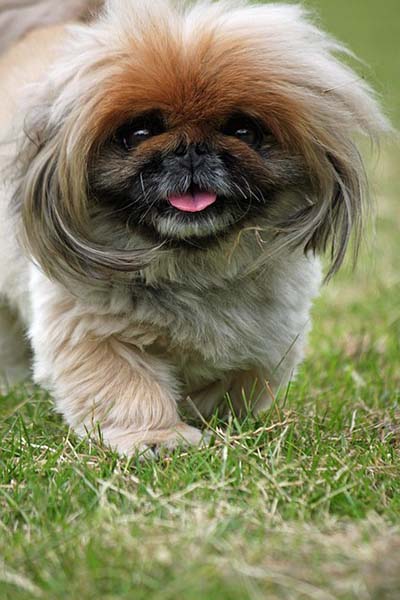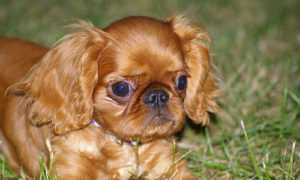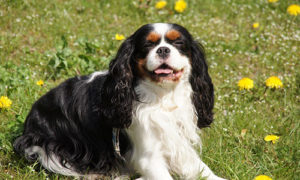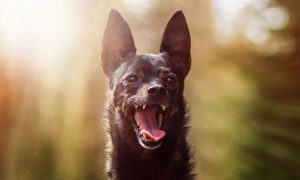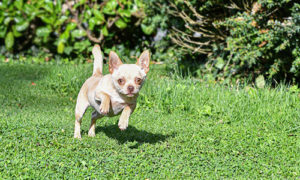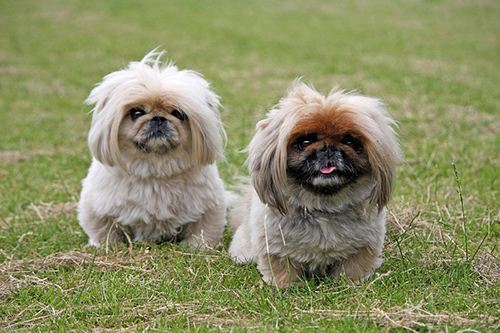
The Pekingese hails from China; in fact, some say that it owes its survival to the Lamaist form of Buddhism, in which the lion was a dignified symbol of Buddha, sometimes appearing in contracted form. The Foo dogs then bore some resemblance to a lion and were carefully bred to highlight this similarity.
As a matter of fact, the Pekingese eventually came to be known as the lion dog. Widespread breeding programs fell under the watchful eyes of palace eunuchs, with no expense spared at the height of their popularity during the Tang dynasty from A.D. 700 to A.D. 1000. Many of these lion dogs were literally treated like royalty and coddled by personal servants.
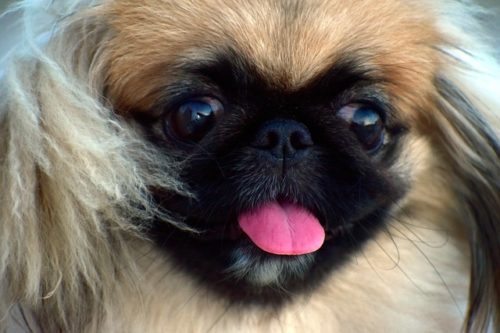
The much smaller Pekingese were known as sleeve dogs since they could be transported in their Chinese owners’ large sleeves. The imperial summer palace was looted by the British in the year 1860. Among the plunder taken were five royal lion dogs, which were exported back to England. One of the lion dogs was given to Queen Victoria.
Because of the lion dog gifted to the Queen and the other four given to other royalty members, the breed became extremely popular among dog enthusiasts. However, their numbers rose slowly; and for decades remained a dog for the wealthiest of owners. Thankfully, the dog became more readily available.
The Pekingese was extremely popular during the 1900s; however, it has since fallen off in numbers. Even though, it remains one of the most competitive show dogs.
Breed Facts
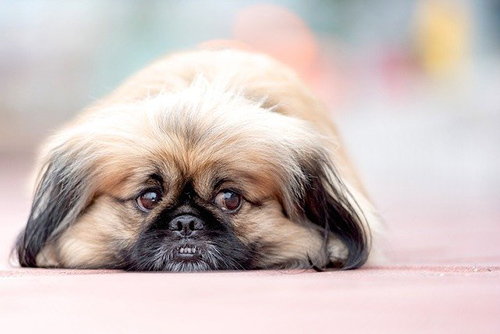
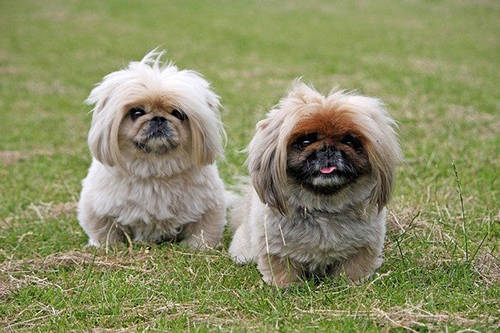
Temperament: This is not a helpless soft lap dog. It is endowed with a courageous character that will not start a fight. However, it will not back down from a fight either. Around strangers, the breed tends to be standoffish. However, this is not a breed-wide trait. Most are outgoing. They’re also very loving and independent, but they’re not overly affectionate. They’re known for their stubbornness; in fact, it is legendary. These dogs are playful around family members but may not be playful enough for young children. Children should be supervised when playing with a Pekingese because these dogs do not tolerate rough handling. Hence, careless children could injure them via rough play.
Upkeep: The breed make great apartment dogs; they enjoy walks outdoors, but equally enjoy a romp indoors. These dogs are susceptible to heat and can die of heat exposure. If you live in a hot area, make sure that you keep them in air conditioning. Their coats are not easy to maintain; it will mat unless combed at least twice weekly; however, more often is recommended. The wrinkles above the nose should be cleaned daily to avoid infection. Furthermore, the coat around the anus must be checked every day for soiling. Also, Pekingese are notorious snorers.
- POPULARITY: Somewhat uncommon
- FAMILY: Oriental
- ORIGIN: China
- DATE DEVELOPED: Ancient times
- PAST FUNCTION: Lapdog
- CURRENT FUNCTION: Lapdog, Companion
- OTHER NAMES: Lion dog, Peking Palasthund
- LIFE EXPECTANCY: 13 – 15 years
- WEIGHT: Not to exceed 14 pounds
- HEIGHT: 6 – 9 inches
- Color: All colors and patterns are allowable
- Group: The Toy Group
- Health Problems: Urolithiasis; elongated soft palate, stenotic nares, KCS, patellar luxation, disticiasis, trichiasis, skin fold dermatitis
Characteristics
This dog is sturdy with a pear-shaped body, heavy forequarters, and lighter hind legs. They’re slightly longer than tall, with a stocky, heavy build. It has a lion-like image. It should indicate courage, boldness, and confidence other than cuteness, gracefulness, or weakness. Its walk is imperial and unhurried, with a slight roll resulting from its wider, heavier forequarters. It has a thick base-coat, and its outer coat is long, bristly, straight, and stands off.
It forms a mane around the shoulders. In fact, the Pekingese must suggest its Chinese roots in its lion-like presence, bold and direct character, and distinguishing expression. The Pekingese is sensitive to anesthesia and does not tolerate heat well. Also, susceptible to corneal abrasions. Puppies must often be delivered by cesarean.
Historical Facts about the Pekingese
Imperial China Connection: The origins of the breed may be traced all the way back to Imperial China. During the Tang and Ming dynasties, The dogs were kept as pets by the Chinese aristocracy, who believed them to have descended from bigger lion-like dogs. They were highly regarded and frequently held a role in the royal court.
The Forbidden City Protectors: Within Beijing’s Forbidden City, the Pekingese were maintained as treasured companions. They were a prestige symbol and a means of protection for the imperial family, and it was claimed that they had been bred to resemble Chinese guardian lions.
Buddhist Temple Origins: According to folklore, Buddhist monks may have played a part in forming the Pekingese breed. One legend claims that the Pekingese originated when a lion and a marmoset fell in love and had a baby. The little, lion-like dogs were developed via selective breeding.
Summer Palace Incident: British and French armies pillaged the Summer Palace in Beijing during the 2nd Opium War in 1860. Several Pekingese dogs were among the stolen relics. Bringing some of these dogs back to England was essential in spreading the breed across the rest of Western Europe.
Survival Through Adversity: During political upheaval in China, the breed was essentially threatened. The dogs’ lives were jeopardized during the 1911 and 1949 Chinese revolutions. Some were slain, while others were smuggled out of the nation to safeguard the breed’s survival.
Western Popularity: The breed acquired popularity in the Western world throughout the late 19th and early 20th centuries. When Queen Victoria developed an interest in the breed, it helped boost its popularity. One of the earliest significant appearances of Pekingese in the United States was in 1893 at the Westminster Kennel Club Dog Show. These events show how the Pekingese breed has evolved from its humble beginnings in China to become a global household name.


